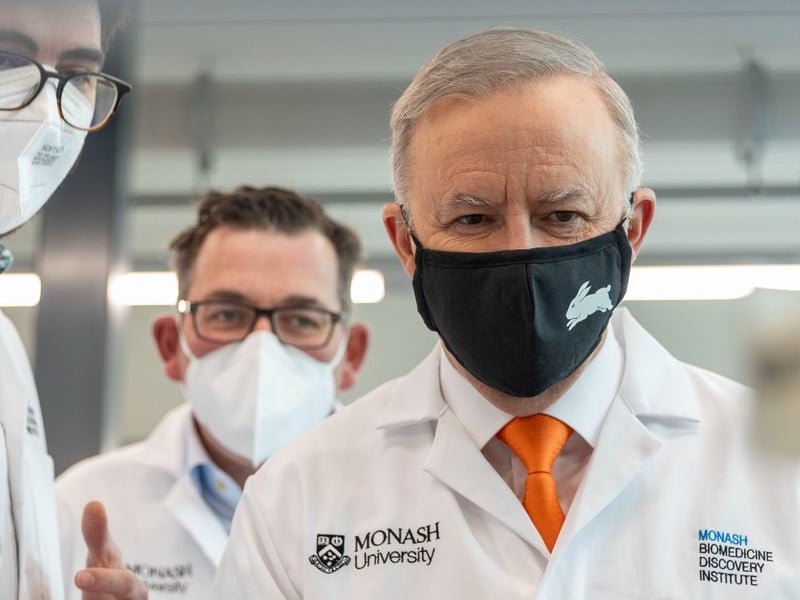The Prime Minister has echoed his predecessor’s push to better commercialise Australian science, but says an important difference is the new government’s plan is accompanied with a commitment to clean technologies and local manufacturing.
It comes as the group representing Australian scientists and technologists says Australia is at a “sliding doors” moment for research commercialisation that, if acted on, would generate tens of billions of dollars for the economy.

At an address to the National Press Club on Monday marking 100 days of the new Labor government, Mr Albanese insisted Australia hasn’t missed the opportunity of a new wave of green manufacturing but is handicapped by “ten years of delay and denial” on decarbonisation by the previous Coalition government.
“The government that we replaced was a barrier. The sort of statements of ‘electric vehicles would end your weekend’ were just extraordinary and just sent completely the wrong message to investors around the world that we were some flat earth society,” Mr Albanese said.
Some clean energy and manufacturing businesses had succeeded “in spite of government mechanisms”, Mr Albanese said, pointing to Tritium, a Queensland electric vehicle fast charger company which this week opened a US manufacturing facility.
Mr Albanese said the manufacturing bases of the companies capitalising on clean technologies like electric vehicles should be in Australia.
“We can do it here. But we can’t do it unless government facilitates that private sector activity. The national interest wasn’t served by the playing of politics and the denial, which was there. If we take [the opportunity] up, we can manufacture a whole lot more things here [and] we can be an exporter of renewable energy.”
To fully capitalise on a decarbonising global economy, Australian innovations also need to be better commercialised, the Prime Minister said.
“There wouldn’t be a solar panel in the world that doesn’t have some intellectual property that was invented by an Australian scientist… and yet we haven’t commercialised that opportunity. We need to be better at it, and we’re determined to be better at it,” Mr Albanese said.
“That’s why it’s no accident that Ed [Husic] has a job not just of Industry, but Science as well. It’s about how you put those things together and seize the opportunity which is there.”
The opportunity is worth billions of dollars, according to Science and Technology Australia (STA), a group representing more than 90,000 scientists and technologists.
Ahead of this week’s national Jobs and Skills Summit, STA on Monday said a “modest investment” in training 2000 entrepreneurial or “bench to boardroom” scientists would generate a $52 billion economic windfall.
The figure is based on five per cent of the newly trained scientists getting similar a similar return on commercialising their breakthroughs as STA president Professor Mark Hutchinson.
Professor Hutchinson, from the University of Adelaide, is the director of the ARC Centre of Excellence for Nanoscale BioPhotonics, a program which the STA says has created 16 startups with a combined market capitalisation and market value of nearly $520 million under his leadership.
“That conservative level of success would not just create a wealth of new jobs for Australians, it would kickstart whole new industries and create an economy powered by science,” STA chief executive Misha Schubert said.
Ms Schubert and the science group want strategic investments now because of a global race to capitalise on research and development, including the recent US CHIPS and Science Act that makes a record $52 billion investment in American science, technology, research, manufacturing and education.
“Australia should be every bit as ambitious for our science and technology ambitions,” Ms Schubert said.
Do you know more? Contact James Riley via Email.

